Expanding social capital in a community by utilizing assistive technology for walking<Category II>

Project Director : Minako NAKABAYASHI
(Associate Professor, Graduate school of Medical and Pharmaceutical Science for Research, Toyama University)
(Length:3years)
Project goals
1) To clarify the challenges that should be addressed to develop an effective support system for older adults’ walking in urban areas
2) To develop assistive technology for older residents in urban communities to walk with ease
3) To identify whether this system helps improve the health of older residents and increase the social capital of communities
Project overview
To facilitate a dynamic aging society, residence in urban areas has been actively promoted as a planning policy by municipalities. The attractions of urban life include ease of transport and compact concentration of various functions, which in turn draws people, making these areas livelier. From these attractions emerge other factors that can improve the health of the elderly, such as going out and interacting with people. Promoting residence in urban areas, which enables elderly persons to acquire these benefits as part of their daily lifestyle, is viewed as a significant target in the field of health support for the elderly. However, at the moment, given the incompatibility of the attractions of the city life with the capacity to walk, even those elderly persons who live in the urban areas have given up on promenading through the center of town. There is a clear need for proposals for highly effective measures to compensate for this incompatibility.
This project seeks to examine the current circumstances surrounding realistic walking distances for elderly persons living in urban areas, as well as various related factors. Additionally, walking support using walking support tools is a fundamental condition for realizing a walking-distance community. To maintain this, we seek to propose a process that not only promotes health and welfare activities within the district city center, but also leads to stimulation of social and economic activities. Additionally, by conducting the entire process of the project in collaboration with government and local stakeholders, we demonstrate a methodology for building a walking-distance community that respects the autonomy of its participants.
Stakeholders
![]() University of Toyama (School of Nursing at Faculty of Medicine, Faculty of Art and Design, Faculty of Human Development, Faculty of Engineering, Organization for Promotion of Regional Collaboration)
University of Toyama (School of Nursing at Faculty of Medicine, Faculty of Art and Design, Faculty of Human Development, Faculty of Engineering, Organization for Promotion of Regional Collaboration)
![]() The city of Toyama
The city of Toyama
![]() Toyama City Kadokawa Preventive Care Center
Toyama City Kadokawa Preventive Care Center
![]() Machizukuri Toyama Co., Ltd.
Machizukuri Toyama Co., Ltd.
![]() Hoshii Society for the Promotion of Autonomy, Toyama
Hoshii Society for the Promotion of Autonomy, Toyama
![]() Hoshii Association for Longevity, Toyama
Hoshii Association for Longevity, Toyama
Community spotlight: The city of Toyama (Toyama Prefecture)
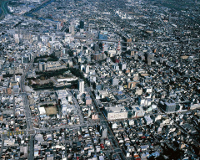
The city of Toyama (which is also the prefectural capital), seeking to establish a concentrated hub-style compact urban development running along the axis of public transportation, has from 2007 defined 10 districts as the urban center of Toyama. Additionally, it is developing business services to revitalize this urban center, based upon three main pillars: 1) improving the convenience of public transportation; 2) creating a lively and revitalized base; and 3) promoting residence in the center of town.
The Hoshii district (population 2,677, across 1,212 households) in which this project is to be implemented represents one such district defined by the city as an urban center. A commercial area adjacent to the central shopping street, it is a place of bustling activity. Although previously lined with many shops dating from the Edo era, the number of local stores has been declining recently due to the impact of large-scale supermarkets entering the surrounding area. With 9.1% of its population being elderly persons who live alone (the city average being 7.2%) and a high 33.3% proportion of population being elderly (the city average being 24.2%), Hoshii is a community with a strong interest in aging issues.
In addition, residents’ organizations such as the Society for the Promotion of Autonomy and the Association for Longevity are actively undertaking activities aimed at "protecting history, tradition and environment, strengthening the connections among people, and creating a more livable city."
(Population statistics current at end of September of 2010)
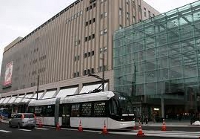
中心市街とセントラム
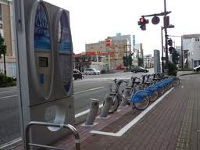
レンタルサイクルシステム「アヴィレ」
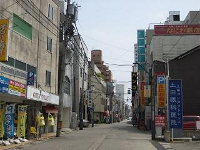
星井町地区内①
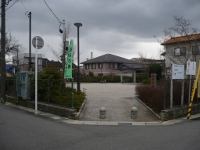
星井町地区内②




